
13 Mar Root Down
I remember a time before the internet, when one eagerly went out to get the newspaper for an important story or event. I remember when we weren’t connected by the World Wide Web. Today is a good day to think of it as a web. Webs connect us, but they can also trap us. They make it possible for us to communicate, but they also tend to wind us up in patterns of communication that don’t always serve us. The connective web of communication within our brains is both inscribed by our DNA and our experience. Our DNA, the code that runs our system, can change and adapt, but those changes take place in a generational time frame. If we think of the DNA as the Operating System of our brain, the software is written by our present experience, and this makes it possible for us to make much more rapid changes in our behavior. However those changes only stick if the software and the hardware can work together. Having said that, it’s really quite difficult for us to get our hardware and our software to match up. The patterns encoded in our brains are quite profound and hard to shift.
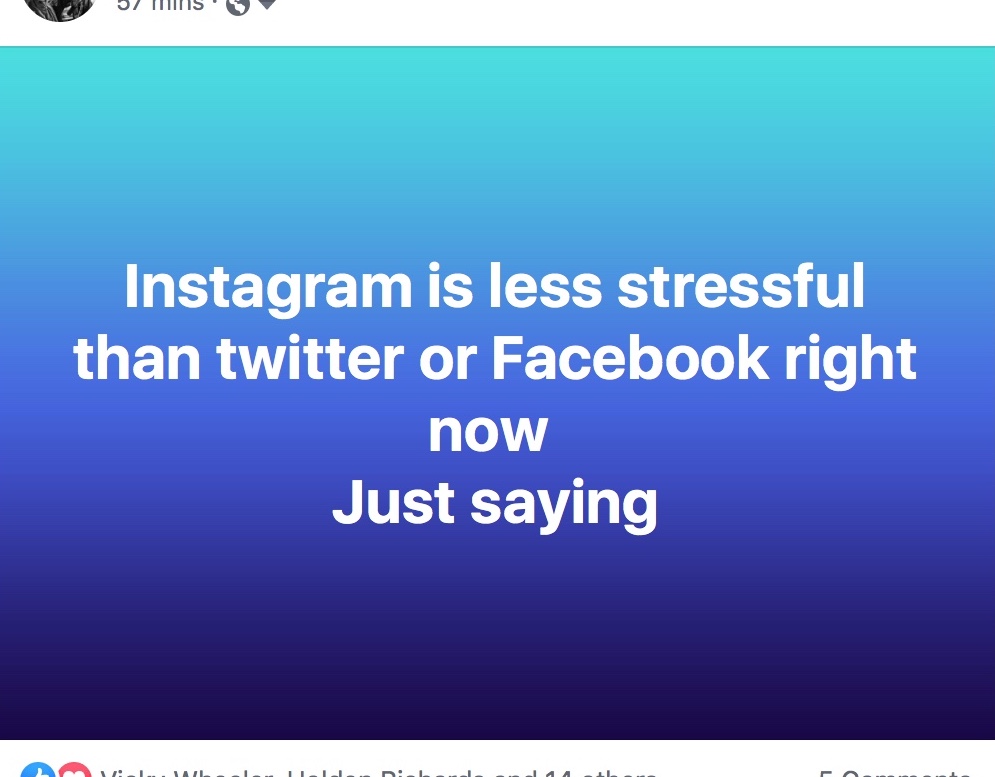
Right now, we are being hit with a barrage of information that continuously throws us off balance. We can’t make plans because everything is changing so rapidly. Our deep rooted need for stability leaves us feeling unmoored, which can increase our sense of panic. Even if we don’t invest in the stock market, the gyrations that are roiling it make it clear that our world-wide sense of a solid reality that hews to some unseen rules, is being shaken. In some ways, I picture the situation like a slow moving Tsunami. We are at the point in that process where the water has receded, revealing all of the previously unseen structures that prop up our reality. We can see just how weak and decrepit they are – rusted, falling apart and stressed to the max. The foundations of our society are being exposed as weak an ineffective, especially in America at this moment. Soon, I fear, the water will come rushing back in and those structures will be stressed in ways that lead to collapse. Some will survive, but when the water rolls back out to it’s more normal level a lot of what we took as immovable will have moved.
Panic is slowly setting in across the globe and it’s hard not to get caught up in it. It affects us both emotionally and physically even as we work to stay grounded and aware. While we can use our intellectual abilities to check in, the whiplash effect of this constant change takes a toll. The generational wisdom inscribed in our DNA cannot keep up with the rapid changes to our social and cultural worlds that have been taking place over the past century, let alone the last month.
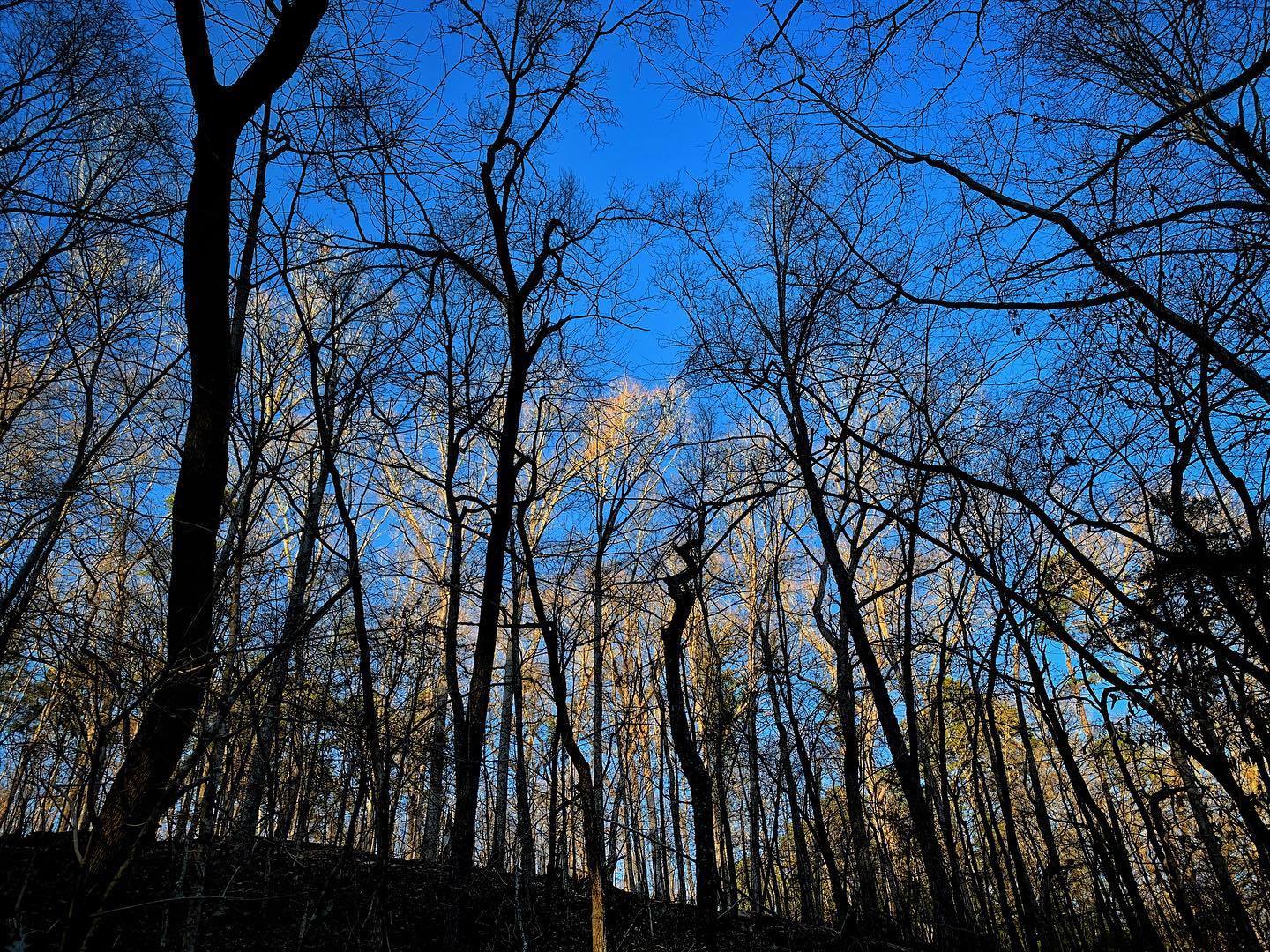
Our body is wired to respond to threats with a fight or flight reaction. This keeps us safe from physical threats like lions, snakes, or marauding warriors. In other words, our fight or flight response was hard wired to protect us from physical threats. It isn’t really wired to protect us from emotional ones, and in fact makes us less able to respond to them. Since it isn’t fully encoded to differentiate between the two, our physical response to stress often mirrors our response to these more physical threats. Our brain floods us with hormones like cortisol that help us to flee or turn and fight. The hormones focus our attention on the threat, give us a boost of energy to respond to it, and cause our body to limit non essential maintenance. In extreme cases, we may vacate our bowels (i.e. shit our pants) and our lungs expand so that we have more power to flee from a threat. Adrenaline kicks in and helps us run faster than we have ever run before. However, this response quickly uses up our resources, and, without time to recover, we remain unprepared for the next threat. If that threat is constant, we start to fall apart. In the wild, that threat is rarely constant. If you have ever seen a cat react to a threat in one minute, and shake it off in the next in order to go back to sleep, you have some sense of how the system is wired to work. If the threat is emotional, and we respond in the same way, and that threat is a part of our core relationships, then we end up reacting constantly in a bad way. This is especially true when we feel that we have no control over a situation. As this world-wide contagion of physical and emotional distress takes place, accepting that we can’t control events is important. When we resist what is unfolding, we waste resources that can be better used to adapt to that situation.
If you think of the body as if it’s a walled village, fight or flight pulls up the gate and shuts the windows. Our resources and defenses move to the edges to defend the interior. This leaves essential services on hold. Under stress, our bodies essentially become cities under siege. Resources start to dwindle and waste starts to pile up within the walls. If the threat stands down, the gates open up and waste can again start to be processed and resources can enter. However, if the threat leaves but the community remains fearful that an attack is imminent, then resources remain in a defensive posture, which means resources struggle to get in and waste can’t get processed. The citizens become malnourished and burdened with waste.
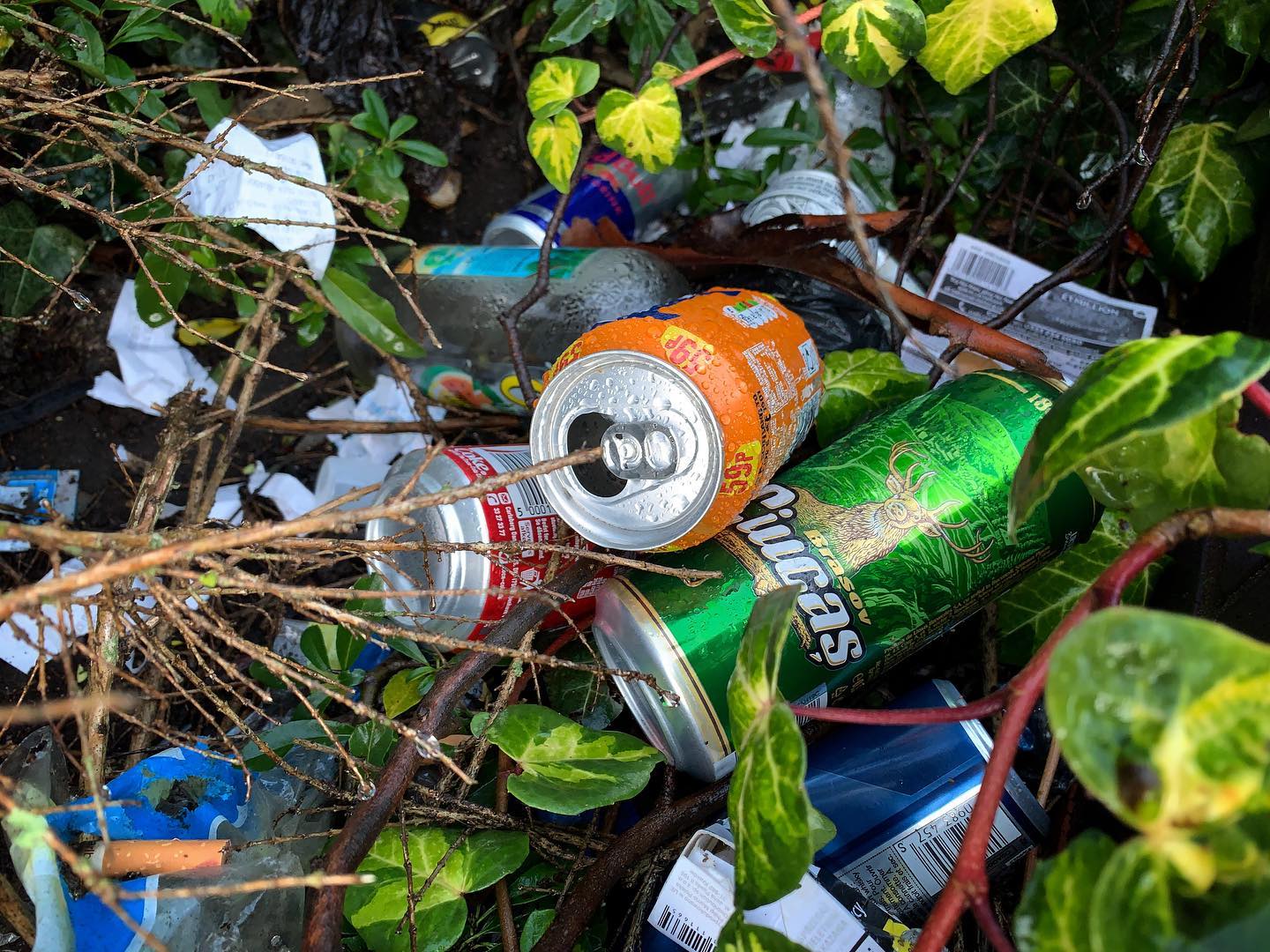
This is essentially what happens when we respond to emotional threats as if they are physical ones. Our body stays on constant alert and we don’t have the resources to take in and process resources in a way that keeps us healthy. However, when we begin to separate physical threats from emotional ones, and retrain our brain to understand the difference, we can help to unwind our automatic physical reactions from perceived emotional threats, and thereby allow the body to restart a healthy flow of awareness and response. When we are aware of the connection between how our body responds physically to emotional danger, we have the ability to retrain our brain to understand that this physical response doesn’t keep us safe. Becoming more grounded, or more rooted, in that understanding helps us to respond rather than react.
Awareness paves the way for acceptance, and acceptance becomes the key to finding a way to put our root down; to become more grounded and able to respond rather than react. I’ve spent the past 15 years working to understand this process in both a universal and personal way. For me, that awareness continues to grow and expand. In some ways this is wonderful, and in some ways it’s exhausting. Each awareness leads to more responsibility, which also means more ability to respond. Still the tension between taking ownership over a situation, and processing the emotional aspects of responsibility without getting caught up in issues of blame and anger can be exhausting. Awareness involves becoming more mindful of how our patterned responses unfold. It can seem like we have no control over them, yet the more we see them, the more we can step back and unwind them. From my own experience, I can attest that even as we do this, more often than not we end up reacting in patterned ways when things get stressful. When things feel panicky, it can feel almost impossible to break out of that web.
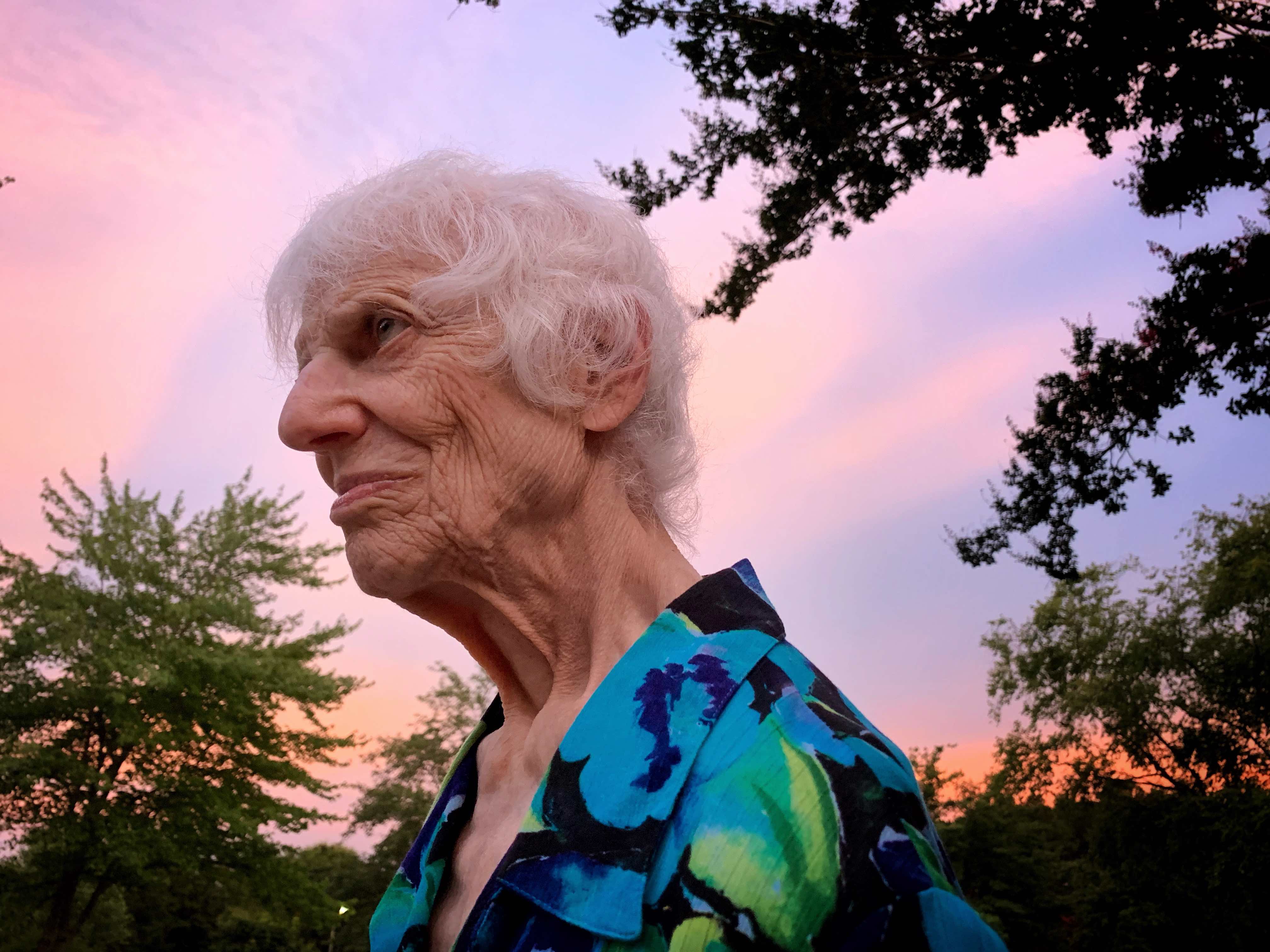
One thing that has helped me immeasurably is yoga. A year ago this month, I finally started a practice. My last year was filled with trauma, and yoga kept me grounded. Last September, I flew home from Israel in order to be with my mother as she passed. I arrived home with 2 hours to spare. She passed at 11 pm and I was at a 9 am yoga class. I knew that I needed it to help me stay grounded, and it did. I went to a class this morning at 9. I knew it might be my last class due to the Corona virus. The night before, the NBA had abruptly stopped it’s season, and celebrities started to announce they had it. I saw that the stock market was set to crash yet again. The class was different because even though it was grounding, we all knew it might be the last class for some time. Still, we all knew that this was why we had been going, so that we might respond better in moments like this.

After class I went to get a coffee. The usually bustling shop was empty. I called my brother in NY to see how things were faring there. He was with his kids because they were out of school due to calls for social distancing. When I got off with him, I called his wife to remind her that things were going to be very rough for the next few weeks. Usually her mom lives with them and helps with their 2 and 3 year old, but she was staying in Connecticut to avoid the virus which had started to affect NY. I thought about how hard it was for us when our kids were young, and I knew that being shut in with little kids would try their patience in profound ways. I wanted to remind her to give herself some slack to not be perfect, but also to try to find some awareness of how she and husband could easily fall into patterns of reaction rather than response. It’s easy to get caught up in the moment and fall into the negative patterns that exist in all relationships. Again, even with all the work I do to avoid it, I’m aware that I do the same- and it often feels like I can’t break out of that pattern. However, my partner and I work hard to listen, and to shift those patterns. It is not an easy process but it is a possible one. Once again, my year of yoga practice has helped me to see this. When I started a year ago, I struggled to get into every single pose. I struggled to pay attention to my breath, and to stay present. After a year, I still struggle, but I am also aware of just how much progress I have made. It may not look like it on the outside. I’m still shaky in my lunges, and my left leg won’t let me stay in tree pose. However, I know how much more solid I am, and how much the practice has helped me outside of that space.
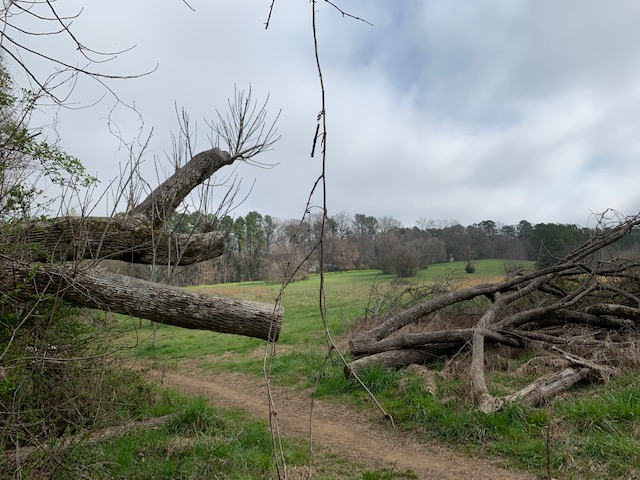
As I got closer to home on my walk from class, I entered the meadow that’s behind my house. I passed through the space where a tree fell during a big storm last year. It was blocking the trail, so crews cut the top away from the fallen trunk. The part that was severed from roots died away and began to decompose. The part that was still connected to the roots began to grow hundreds of new branches that reached towards the sky. It’s a little hard to see because spring hasn’t sparked those branches to grow leaves yet. but the branches on the left will soon be sprouting. The tree may have fallen, but it is still grounded and finding a way to respond to a crisis by creating new life.
In yoga, we are continually working to stay grounded physically, emotionally, and spiritually. Tonight, I got an email that the studio is closed until further notice. It’s ok. I will use the practice to ground myself, and help my family get through this. Even if we are not sick, we are connected to a web of often unseen connections that this crisis is exposing. It’s clear that we need this web to act a bit more like a net, and I can see that awareness rising.
Traumatic moments are moments of opportunity for change. I am generally an optimist and I tend to pivot towards a focus on the positive aspects of seemingly negative moments. This perspective helped me to make a year of trauma into a year of growth and change. When we can’t just move forward in a “business as usual way”, we are forced to be more present and aware. Throughout the traumatic events of last year, I worked on a kind of radical acceptance. I could not change my situations, like my mom’s decline, so I just leaned into the idea of not resisting what was. This sense of acceptance made more room for my mother to find acceptance, and we had a lot less conflict and more peace.
The same is true of this virus. There will be more emotional pain than physical disturbance over the next few months. People will be stressed out about money, work, and uncertainty. The more that we can do to support each other, the more we’ll find support for ourselves. It’s not a one to one correlation, or exchange. Instead, it’s a process of re-connecting to ourselves, our neighbors, and our communities that can build more trust and connection. It often feels like a risk to give to others, but when we both give and take with acceptance, we create a more grounded and stable world.

No Comments